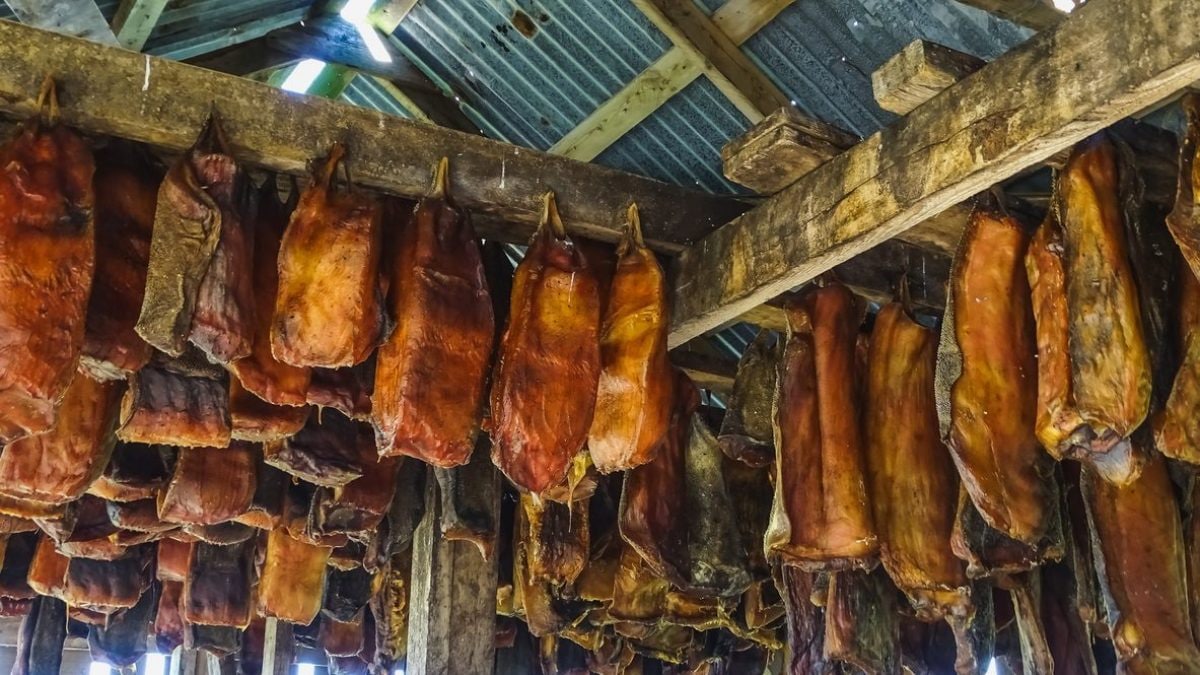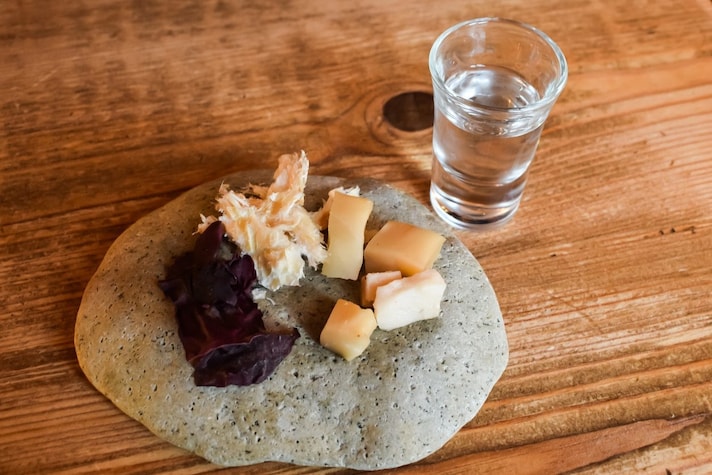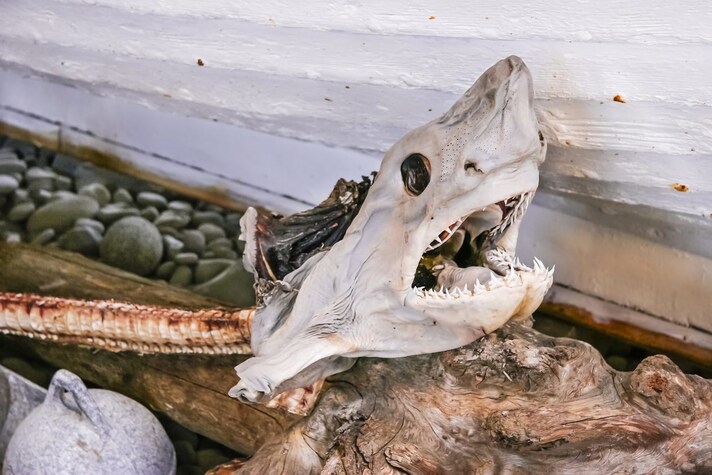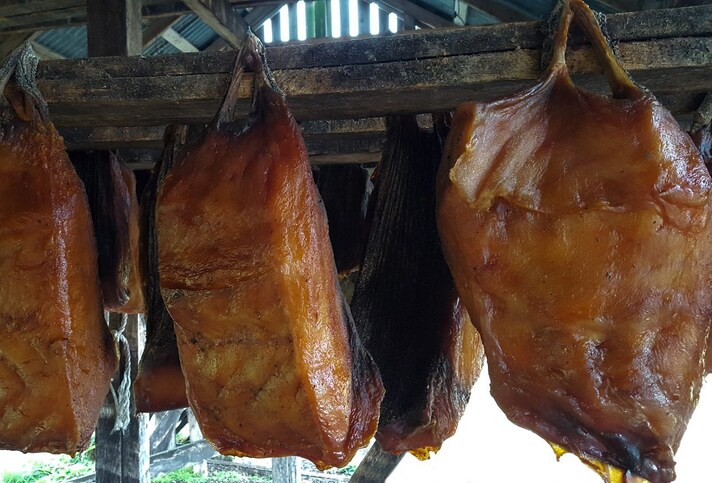
Rotten, decayed, with an unbearable stench and a rubbery consistency. It seems like something out of a horror movie starring zombies but in truth it is nothing more real. In fact, in Iceland it is a local specialty, a delicacy (but in this case we keep the benefit of the doubt) that in Reykjavik and its surroundings is a must (or almost) at least for tourists (the bravest ones) who come to the area. Rotten shark, in the local language called hakarl (precisely, fermented shark), is one of the most controversial foods around. Smelly and putrid, to eat it you need a strong stomach and probably an even more steely nose to avoid falling victim to the stench it gives off.

But how is rotten shark made? How is hakarl obtained? After capture, the animal's meat is traditionally buried for a period of three to six months (a bit like the Chinese centenary egg) until it reaches the optimal state of putrefaction. To understand if the maturation, let's call it that, is complete, the shark meat should have a rubbery, rotten consistency, releasing (nauseating, say those who have tried it) scents of ammonia. It seems in truth that many Icelanders after an initial extreme experience categorically refuse to taste it, while others have never even touched it. Over the years, hakarl has become a sort of challenge for tourists traveling to the island, but not everyone manages to complete the mission.
Why Does Shark Meat Ferment?
There is a very specific reason, in fact, why shark meat is subjected to a period of fermentation. In fact, it cannot be eaten fresh because it is toxic and poisonous. The animal expels urine directly through its body (it practically sweats it), which is why the meat becomes impregnated with uric acid, which can only be eliminated through a fermentation process.

And the Icelanders found the right solution: to let the meat rot underground, in special pits of sand and gravel, so that it loses the acids it was filled with, crushed by the weight above. This methodology has now been replaced by a more modern one: the shark cuts (without the head and entrails) are left for months in special environments, vacuum-packed and pressed until they lose their poisonous liquids.

Once the fermentation period is over, the meat is extracted, cut and hung to dry for a few months in airy places away from sunlight. Once this phase is over, the pulp is separated from the darker skin and then cut into cubes, stored in special airtight jars due to the powerful stench. Anyone who dares to open a package will find themselves faced with a nauseating blast of ammonia, then small pieces of rotten meat to eat with a toothpick (holding your nose) and wash down with brennivin, a powerful Icelandic brandy.
;Resize,width=767;)
